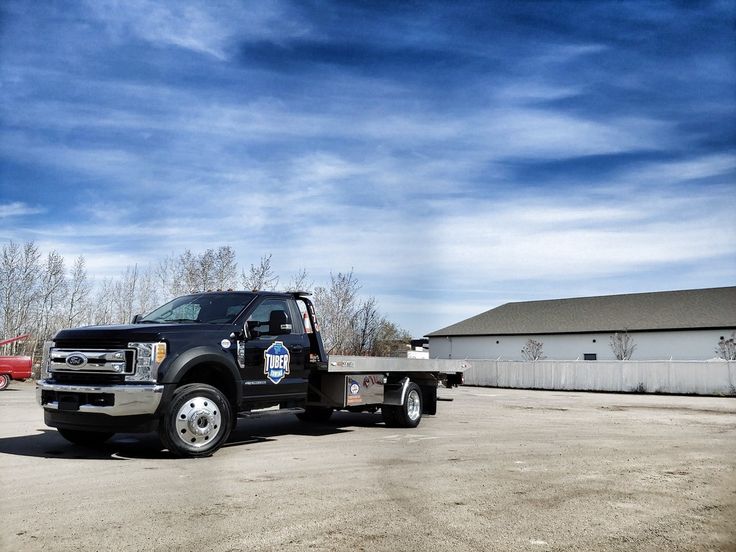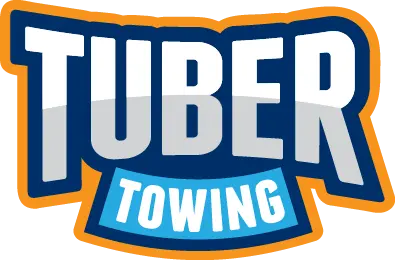
Safe flatbed towing ensures your vehicle transport is damage-free. Discover expert flatbed towing tips from Tuber Towing for safe, reliable hauling. At Tuber Towing, we pride ourselves on not only offering top-tier towing services but also on educating drivers, enthusiasts, and fellow towers about the best practices in the industry.
Whether you’re a DIY tower, an aspiring tow truck operator, or someone just curious about how it all works, this guide will give you a comprehensive breakdown of safe flatbed towing practices.
What is Flatbed Towing?
Flatbed towing involves loading a vehicle entirely onto a flat platform, usually mounted on the back of a tow truck. Unlike hook-and-chain towing or dolly towing, flatbed towing ensures that all four wheels of the towed vehicle are off the ground. This reduces the risk of damage to the vehicle’s drivetrain, tires, and body.
Flatbed towing is especially recommended for:
- All-wheel-drive (AWD) or 4WD vehicles
- Exotic or low-clearance cars
- Vehicles involved in accidents
- Long-distance transports
For a visual walkthrough of how flatbed towing works, check out our demo videos on our YouTube channel, TuberTaylor, where we break down the entire process step by step.
Why Choose Flatbed Over Other Towing Methods?
There are several advantages to choosing flatbed towing over more traditional alternatives:
- Reduced Wear and Tear
Since all wheels are lifted off the road, there’s no chance of tire wear or drivetrain strain. - Increased Safety
Vehicles are securely strapped onto the flatbed, which prevents swaying or dragging. - Damage-Free Transport
Ideal for high-value or delicate vehicles, flatbeds eliminate the risk of scraping the undercarriage. - Versatility
Flatbed tow trucks can accommodate everything from motorcycles to light-duty trucks.
Need to hire a trusted flatbed towing service? Tuber Towing has you covered. Our fleet is modern, and our operators are trained in the latest towing safety standards.
Safe Flatbed Towing Checklist
Before hitting the road with a vehicle loaded on a flatbed, there are a few essential safety steps every operator or DIY tower should follow:
1. Inspect the Equipment
- Check the winch and make sure it’s functioning properly.
- Examine tie-down straps for frays or damage.
- Inspect the flatbed surface for oil, debris, or ice.
2. Load the Vehicle Properly
- Position the vehicle centered and balanced on the bed.
- Always use wheel chocks when necessary to prevent rolling.
- Engage the parking brake on the vehicle once it’s positioned.
3. Use Correct Tie-Down Techniques
- Attach tie-downs to secure vehicle points (control arms, wheels, or manufacturer-approved spots).
- Apply equal tension across all straps to avoid shifting during transport.
- Use four-point tie-downs for maximum stability.
Want to see these techniques in action? Visit TuberTaylor on YouTube for how-to videos, tool recommendations, and live towing demos.
Common Flatbed Towing Mistakes to Avoid
Even seasoned operators can slip up if they’re not vigilant. Here are some common flatbed towing mistakes that could lead to unsafe conditions:
- Overloading the flatbed
Every flatbed has a weight limit. Always check your tow truck’s Gross Vehicle Weight Rating (GVWR). - Incorrect tie-down angles
A tie-down angle that’s too steep or too shallow can cause instability. Aim for a 45-degree angle when possible. - Forgetting safety chains
While your straps do the heavy lifting, safety chains provide a secondary safety layer in case of failure. - Neglecting weather conditions
Rain, snow, or high winds can make towing more hazardous. Adjust your driving and loading strategy accordingly.
Need more tips? Our Safe Towing Guide has in-depth tutorials and downloadable checklists.
Driving Tips When Towing with a Flatbed
Driving with a vehicle on your flatbed changes how your truck handles. Here’s how to stay safe on the road:
- Drive slower than usual, especially on turns and inclines.
- Increase following distance to allow more braking time.
- Avoid sudden maneuvers—abrupt stops or sharp turns can shift the load.
- Use tow mirrors if your visibility is obstructed.
Want to learn how pros handle tricky terrain or emergency towing scenarios? Subscribe to TuberTaylor on YouTube for real-world driving footage and pro commentary.
When to Call a Professional
While flatbed towing is something that can be learned, there are situations where calling a professional is the smarter—and safer—option:
- Vehicle is stuck off-road or in a ditch
- Your car has major suspension or axle damage
- You’re unsure about your equipment’s capacity
At Tuber Towing, we operate 24/7 with certified professionals ready to help. If you’re ever in doubt, reach out to us at TuberTowing.com/contact.
Final Thoughts
Flatbed towing, when done correctly, is one of the safest ways to transport a vehicle. Whether you’re hauling a sports car across state lines or just need to move a stalled SUV across town, understanding the basics of proper loading, securement, and road handling can save you time, money, and stress.
Remember, practice makes perfect—and a little expert guidance goes a long way. If you want to master the art of towing, don’t just read about it—watch it in action. Subscribe to our YouTube channel, TuberTaylor, for hands-on tutorials, pro tips, and real-time towing operations.
And if you ever need towing done right the first time, trust Tuber Towing—your local experts in safe, reliable flatbed transport.
